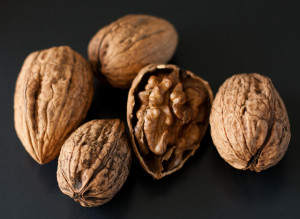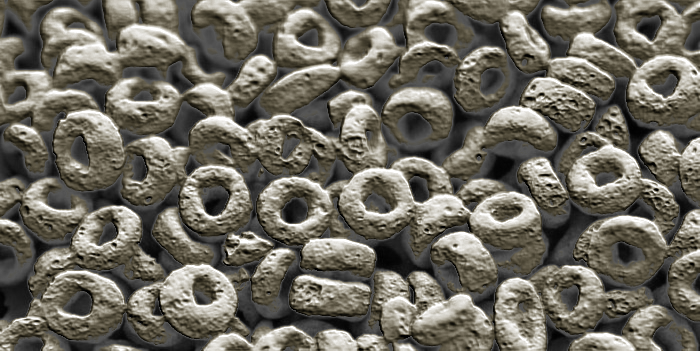
A social media story crossed my feeds today, and in the spirit of spending a small fraction of my online time addressing issues of science and its opposite, pseudoscience, I thought I’d dissect the claims in the story and look at the evidence behind its claims. Someone on Facebook shared an Oct. 14, 2014 story from “GetHolisiticHealth.com” entitled “FDA Says Walnuts Are Illegal Drugs” [1]. Normally, stories like this are the “corpses floating face-down in the river” of the internet – best to avoid them. But I decided to check it out and see if there was anything to be assessed from this story, so I flipped the corpse over to have a look. Here is what I learned.
The article
GetHolisticHealth.com’s story, “FDA Says Walnuts Are Illegal Drugs,” boils down to this: the FDA sent a letter to Diamond Foods telling them their walnuts are drugs. The story is full of various rhetorical devices intended to distract the reader from thinking about whether or not its premise is true. Here is a sampling of the logical fallacies present in the article:
- Ad Hominem Attack: “According to the authoritative agency of food and drug-related tyranny, or FDA for short…” [1]
- Straw Man: “The primary cause of the beef that the FDA has with the company comes from Diamond Foods promoting the healthy benefits of eating walnuts regularly.” (we’ll see why this is a Straw Man argument in a moment)
- False authority: In order to backup the claim that walnuts have a “…positive impact on the health and maintenance of our blood, brain, kidneys, liver…” the article cites a post from known internet quack Joe Mercola, rather than citing the actual peer-reviewed, published articles on the assessment of these benefits.
All of the above happen within the first 2 paragraphs of a 10-paragraph story, so we can see that the writer is already off to a rough start.
If we boil away the cloud of rhetoric that obscures the points in this article, we find a few key points:
- Diamond Foods is implied to be in the right
- The FDA is implied to be in the wrong
- Walnuts have proven health benefits
- Diamond Foods was wrongly accused by the FDA of selling a drug when all they were doing was promoting the health benefits of walnuts
It’s easy to track down the actual evidence behind this article, so let’s look at a few things; I leave it as an exercise to the critical-thinking reader to go further, as you should.
The letter
The FDA did, in fact, send a warning letter to Diamond Foods. Was it in 2014, when this article was written? No. Was it in 2013? Nope. 2012? Keep going. The letter was issued in 2010. It took me 5 minutes to track it down, because I made the erroneous assumption that the article was prompted by a recent event. It was not. The article appeared in 2014, more than 4 years after the letter was issued by the FDA. I have no explanation for that. I note it merely because it made tracking down the letter slightly challenging.
However, the FDA website yielded the letter with a quick search [2]. So, what does the letter say? In fact, the letter was sent, according to the FDA, because Diamond Foods’ claims about walnuts (printed on the packaging) were tantamount to the kinds of claims that medicines make, and not only that, they were partly false or misleading because they were in opposition to established research.
Let’s look at a few key sections of the letter. I encourage you to read the whole thing, as that is the only way to get the complete picture of the FDA’s accusations. Some excerpts:
“Based on claims made on your firm’s website, we have determined that your walnut products are promoted for conditions that cause them to be drugs because these products are intended for use in the prevention, mitigation, and treatment of disease… Because of these intended uses, your walnut products are drugs within the meaning of section 201 (g)(1)(B) of the Act [21 U.S.C. § 321(g)(B)]. Your walnut products are also new drugs under section 201(p) of the Act [21 U.S.C. § 321(p)] because they are not generally recognized as safe and effective for the above referenced conditions. Therefore, under section 505(a) of the Act [21 U.S.C. § 355(a)], they may not be legally marketed with the above claims in the United States without an approved new drug application.” [2]
So the problem is not that the FDA is labeling walnuts as a drug. The problem is that Diamond Foods labeling went so far overboard as to make the walnuts appear as if they are a new wonder drug, the kind of drug that would need to go through rigorous trials in order to be allowed to make such claims.
Where this gets particularly troublesome is that Diamond Foods makes claims in opposition to established evidence about the health benefits of walnuts. For instance, again quoting from the letter,
“The statement suggests that the evidence supporting a relationship between walnuts and coronary heart disease is related to the omega-3 fatty acid content of walnuts. There is not sufficient evidence to identify a biologically active substance in walnuts that reduces the risk of CHD. Therefore, the above statement is an unauthorized health claim. This letter is not intended to be an inclusive review of your products and their labeling. It is your responsibility to ensure that all of your products comply with the Act and its implementing regulations.” [2]
Of course, the FDA rightly asserts that the burden of proof is, as always, placed firmly on the claimant and it’s Diamond Foods’ responsibility to back up its claims… which appear anyway to fly in the face of established research on omega-3 fatty acids as of February, 2010.
The above excepts also make clear why GetHolisticHealth.com was making a Straw Man argument: they oversimplified the content of the letter to try to get the reader to side with their perspective, rather than laying out the specific claims of the FDA letter. This oversimplification creates a “straw man” that is more easily knocked over than making a clear and detailed accounting of the real claims.
The Legal Perspective
It also turns out that in response to this letter from the FDA, a class-action lawsuit was initiated as Diamond Foods’ claims were a violation of California Law on food and drug advertising. Diamond Foods settled the suit out-of-court; one cannot draw a conclusion of guilt or innocence from this, but it means that Diamond Foods made the conscious decision to pay out rather than fight the claims in court. [3] The text of the settlement itself is in Ref. [4]. Diamond Foods paid out $2.6M and agreed to remove the labels from its products and website. This all happened in 2011-2012.
So from a legal perspective, Diamond Foods relented, paid out a modest sum of money (basically the cost of a bag of walnuts per person in the class action suit), and stopped the walnut marketing that got them in trouble.
This is not a scientific pronouncement, but from a legal perspective Diamond Foods appears to have relented and it gives the appearance that they accepted being in the wrong and settled the suit.
Final thoughts
I haven’t at all looked at the actual science behind any of Diamond Foods’ claims, but that actually isn’t necessary in this case. The original GetHolisticHealth.com article was a poor piece of science journalism, clearly using logical fallacies to make its introductory arguments. The article is rife with more of them; I leave it to you to go find them. They cherry-picked quotes from the FDA letter to back their philosophical perspective, which appears to be that (a) FDA overreaches its regulatory authority and behaves absurdly and (b) walnuts are as healthy as Diamond Foods claims.
A look at the letter itself fixes the actual accusation made by the FDA: Diamond Foods makes claims akin to drug claims, some of those claims are wrong or misleading, and the burden of proof for those claims is on the claimant. The courts have also spoken: Diamond Foods settled a lawsuit on this matter, paid $2.6M, and stopped their walnut labeling campaign.
I like healthy food. Let me rephrase. I like food. I try to live a healthy lifestyle by combining physical activity with moderate food intake. I do make food choices based on the actual content of food. But I am not a proverbial sheep. I don’t trust labels on food products that lecture me about their health benefits. The will to believe, a human trait, makes me vulnerable and potentially gullible to the misleading claims of marketing companies. As a scientist, I accept I am fallible and try to think carefully around claims. This social media news article makes some pretty shaky claims, citing poor sources and coloring their assessment with a specific world-view. We should all be cautious about blindly sharing articles like this. Below are some things you can do in the future to avoid sharing nonsense on the web.
The Social Media Consumer’s Guide to Avoiding Pseudoscientific Nonsense – Resharing Edition
Do not re-share an article if it contains the following words anywhere in either the name of the news source or the body of the article:
- Mercola
- Holistic
Also, if the opening paragraph commits any of these very blatant logical fallacies, do not re-share it:
- Ad Hominem Attack: an attack on the person or group or organization that is not based on strong evidence (e.g. name-calling)
[1] http://www.getholistichealth.com/40760/fda-says-walnuts-are-illegal-drugs/
[2] http://www.fda.gov/ICECI/EnforcementActions/WarningLetters/2010/ucm202825.htm
[3] http://www.lexology.com/library/detail.aspx?g=154c440d-cf31-405b-8ed1-e4aaae919279




